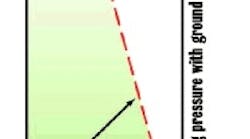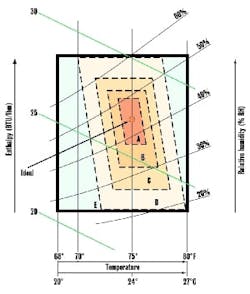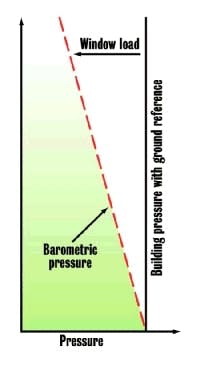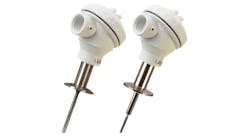By Béla Lipták, PE, CONTROL Columnist
Among the members of our team at IBM, Carlos Garcia was my favorite. He was a Columbian with an enormous IQ, a shy smile, and a healthy respect for my favorite drink: aguardiente. A close runner-up to Carlos was Ray Moss, a fourth-generation Irishman from Boston. Ray had a flag of Ireland on the wall of his office, a block of Irish moss on his desk, and 30 years of expert project management experience in his background. The others in the team included Tom Coward, Gerhard Koch, and John Honeycomb, all honest, hard working, competent IBM-ers.
IBM's Real Estate and Construction Division (RECD) hired me in 1975 as its control consultant. My job was to help reduce the company's energy consumption by applying process control know-how to manufacturing, office, and utility facilities.
One of our many projects was to make the new IBM headquarters building in New York City into a showcase of energy conservation. The 43-story building featured a helicopter pad on the roof, priceless paintings exhibited on the ground floor, and fully grown palm trees-complete with artificial sunlight-in the lobby.
Time Travel Into the Past
Before starting the design of the controls for this building, located at 590 Madison Ave., I had to learn the normal, everyday practices of the heating, ventilating, and air conditioning (HVAC) industry in order to decide if HVAC hardware could be used to implement our optimized building controls. The short answer to that question turned out to be "no."
We could not use HVAC quality thermostats because they were inaccurate, had no memory, could not communicate with central computers, and their algorithms (if one can call a PI gap or a throttling range an algorithm) were very primitive. Similarly inferior were the final control elements: mostly dampers, VAV boxes, and on-off solenoids.
The dampers had high leakage rates, excessive deadbands, and hysteresis, while the solenoids, if carelessly installed, were prone to water hammer. Since the client was IBM, the supplier of the control computer was a given, while the displays, which I visualized as large (i.e., wall-size), dynamically interacting, and multicolor graphic panels, also were beyond the capabilities of HVAC suppliers.
The next task was to learn the rules and regulations of the New York City bureaucrats: the building codes. I asked the city for a permit to allow the installation of operable sashes (two or three openings below the windows) on the upper floors, where noise and street pollution are no longer a concern, so that we could periodically open these mini-windows when air quality (i.e., temperature and/or humidity) was favorable outside.
I was told that the "suicide laws" of the city forbid the opening of any windows in new buildings. The only exception is the United Nations building, which is not under the city's jurisdiction. The fact that only a canary could fit through our proposed sash made no difference and the issue was closed.
I also tried to apply common sense in determining the outside air requirement for the building. Naively, I wanted to provide more fresh air to crowded conference and lecture rooms than to empty storage spaces. Therefore, I suggested controlling the air intake on the basis of the quality and CO2 content of the air in the offices.
That idea, too, took off like a lead balloon. We were told to provide the same amount of air for each square foot of floor area, period! The bureaucrats did not want to be bothered with details such as the fact that human beings consume oxygen, while the floor doesn't.
The Design
In spite of all these obstacles, we designed a pretty efficient building: one that heats itself and does not need to "pay energy," even when the outside temperature is near freezing. The control strategy was based on the zero-energy-band comfort zone concept, which allows the transfer of excess heat from the interior offices (windowless spaces that are continuous heat generators, because the people and office equipment all release heat) to the perimeter offices (offices with windows) that do require heat in the winter. In addition to free heating in the winter, we also provided free cooling during the summer by taking advantage of enthalpy-based control and by cooling down the building structure during summer nights to store cooling energy for the next day.
In our design, the central computer selected the comfort zones for each room on the basis of the type of usage of the space: Comfort zones A and B were assigned to lecture rooms and conference rooms, C and D to occupied executive and regular offices, and E to unoccupied offices, while lower levels of comfort were provided for storage and unoccupied spaces or for nighttime and weekend periods.
SWITCHING ZONESThat way, when a space is used as a classroom for a lecture, its comfort level is automatically increased (comfort zone boundaries are reduced) to guarantee maximum comfort, and when the class is over, the comfort zone boundaries are increased (comfort level is lowered) to that assigned to unoccupied spaces. Through this approach, both energy conservation and self-heating were achieved.
Such controls necessitated the use of intelligent and computer-compatible thermostats, which at that time did not exist. This gave us an opportunity to design a new thermostat that includes not only a microprocessor chip, but also is aesthetically pleasing.
The Chimney Effect
Our design also eliminated the chimney effect, which is caused by the cold winter air being heavier on the outside than the warm office air inside the building. This pressure difference sucks in large amounts of outside air into the building through the cracks in the walls, doors, and windows. The cost of conditioning this excess outside air increases the cost of building operation.
The chimney effect (i.e., the tendency of the air to rise in traditional high-rise buildings) also is caused by the reduction in pressure in the building as the elevation increases. We eliminated this effect by maintaining uniform pressure on all floors of the building.
COMPENSATIONWe used the same pressure controls to compensate for the "air pumping" effects of elevators. Naturally, one can maintain the inside pressure constant only if the windows are strong enough to withstand the outward pressure on them, caused by the constant inside pressure while the pressure outside is dropping with rising elevation.
History Interferes
On November 29, 1979, while working on the design of the IBM headquarters building, a letter of mine appeared in the New York Times. In this open letter, I asked the Communist puppet government of Hungary to return the remains of the martyred prime minister Imre Nagy (who was executed after the 1956 Hungarian Revolution) to his family. As a result, I was contacted by the anti-Communist underground and traveled to Hungary. While being harassed by the secret police, we started our search for the (at that time still secret) grave.
In the meantime, on November 12, 1980, a topping out ceremony was held at the IBM building, but by that time I also was deeply involved in my "other" project. On one of my trips to Hungary, as I took my reserved seat on an express train to Nyiregyhaza (a town in northern Hungary), I noticed three familiar faces in my compartment: they belonged to three well-fed young men wearing undersized business suits.
As soon as the train left Budapest, they tried to provoke a fight by calling my mother a "whore" and me a "dirty Jew" and a "faggot." To avoid a fight, I left the compartment and went to the dining car. As I was sipping my coffee at a stand-up table, the three men came in and one walked directly into me so hard that I lost my balance. After they left the dining car, my coffee tasted strange.
Later, I felt so dizzy and weak that I had to lie down on the bare ground in a public place. When I finally got back to my mother's apartment in Budapest, I could not fall asleep. In order to get some rest, I checked into a hospital. While in the hospital--and without permission from me or my family--I was administered electric shocks on four different occasions. As a consequence of that "treatment," I lost much of my memory. To this day, I don't know if this was done because of medical incompetence or due to other reasons, but I do know what it did to my IBM project.
The Windows Are Popping
After that "treatment," my memory was a mess: on one occasion, when two young IBM engineers came to my office to pick up a flow controller, I didn't even recognize them. Ray Moss noticed that there was something wrong with me. On one occasion, he said, "How can a smart guy like you say something so stupid as that?"
Tom Coward also noticed my change and made no secret of his displeasure. Yet, I could not bring myself to tell them the truth, and therefore decided to just fade away from the project. I asked an old friend and colleague, Augie Brodgesell, to supervise the installation and the startup of the building controls at 590 Madison Ave., and thereby ended my involvement with that project.
Around 1985, a couple of events occurred that related to both my IBM and my Hungarian projects. First, I learned that a construction firm in Boston copied our anti-chimney-effect control system, without realizing that it requires reinforced windows. Needless to say, I giggled a bit when I heard on the evening news that windows were "popping out" from a new building in Boston. The other event, which occurred on October 9, 1985, was that my op-ed article was published in the Wall Street Journal. In that piece, I reported that we finally located the secret grave of Imre Nagy. The rest is history . . . .







